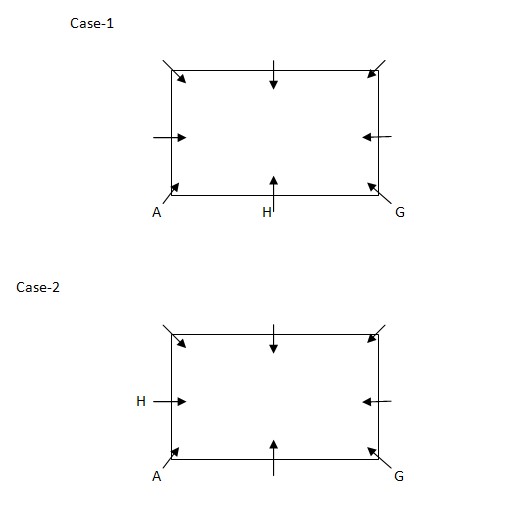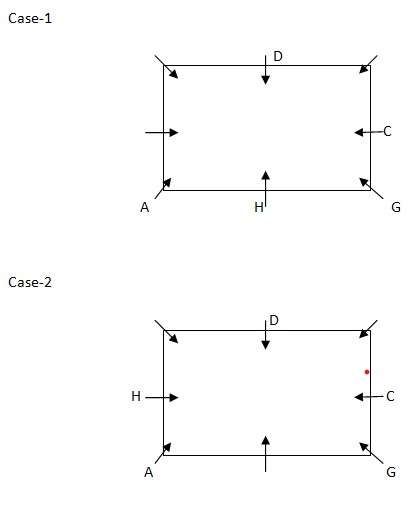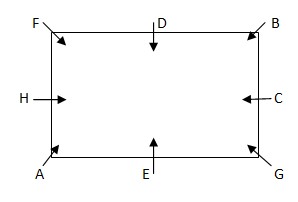Start learning 50% faster. Sign in now
A sits second to the left of G, who sits at one of the corner of the table. H sits either to the immediate right or to the immediate left of A. From the above condition, there are two possibilities.  D sits opposite to the one who sits second to the left of C. C sits in the middle of the sides of table. D is neither the immediate neighbor of G nor A
D sits opposite to the one who sits second to the left of C. C sits in the middle of the sides of table. D is neither the immediate neighbor of G nor A  E is the immediate neighbor of either of A or F, but not the both. B sits second to the left of F. From the above condition, case1 gets eliminated. Case 2 shows the final arrangement.
E is the immediate neighbor of either of A or F, but not the both. B sits second to the left of F. From the above condition, case1 gets eliminated. Case 2 shows the final arrangement. 
Match these bird sanctuaries to their correct locations:
Bird Sanctuary Locat...
Paytm partnered with ___________ Company to enable international fund transfer directly to Paytm Wallet.
Where is the headquarters of the International Monetary Fund (IMF) located?
Which of the following is NOT typically a result of an earthquake?
Lanthanides and actinides are also called ___________.
What type of tax is commonly referred to as "paper taxes"?
On which day is Krishna Janmashtami celebrated during the dark fortnight of Bhadrapada?
Faiyaz Khan, a renowned musician, was associated with which musical instrument?
In which year “Global gender gap index” was published for the first time?
Where is the Indira Gandhi National Centre for the Arts (IGNCA) located?